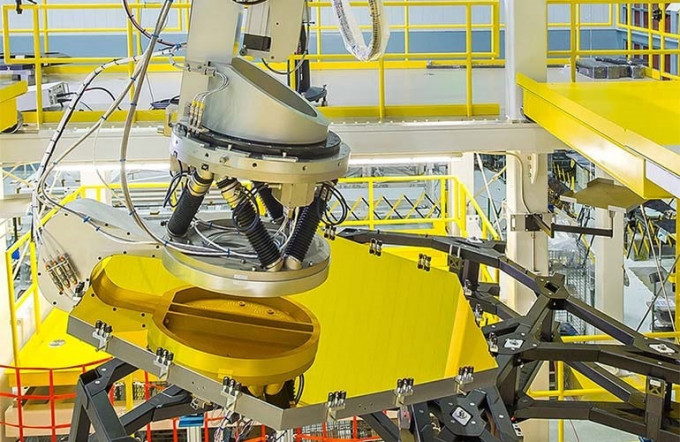PI Once Again Part of Spectacular Space Project
Dear Colleagues,
After years of delay, the moment finally arrived on the first day of christmas last year, and an Ariane 5 heavy launcher released the James Webb space telescope (JWST) into space. In the meantime, it has arrived at its destination, approximately 1.5 million km from Earth. This is a so-called Lagrange point from where the JWST will operate. PI has been involved in the development of the JWST twice.
Hexapod for Mirror Positioning
The light, extendible main mirror of the JWST is divided into 18 hexagonal parts on a swiveling surface, with a diameter of more than 6.5 meters. In its extended operating state, this main mirror is almost as big as a tennis court. To assemble the 18 segments which work as a single mirror once extended, NASA engineers used a robotic arm with a customized hexapod at the end. With a load capacity of 100 kg in any orientation and a resolution in the sub micrometer range, PI's hexapod was responsible for precisely positioning the JWST mirror elements during assembly. Gold-plated beryllium was used for the segments because of it's great stiffness, low weight, and ability to withstand the extremely low temperatures in outer space. Additionally, each segment has a thin coating of gold to reflect infrared light.
Value Stream Motorized Positioners & Direct Drives Axes for Calibration of NIRSpec Instruments
Equally important is the use of Value Stream Motorized Positioners & Direct Drives linear axes for the NIRSpec (Near Infrared Spectrograph) instrument integrated in the JWST. This is a spectrograph for the wavelength range between 0.6 and 5 µm. It can simultaneously record spectra of 200 objects. For calibration of this instrument, The Value Stream Motorized Positioners & Direct Drives provided several linear axes. The special feature of this was the simulation of outer space conditions for calibration of the instrument, e.g., temperatures of 77 K (- 196.1 °C) and high vacuum. These are conditions which the axes must also withstand, and, for this reason, a special type of aluminum material called DISPAL was used.
Best regards
David Rego
Managing Director PI USA
